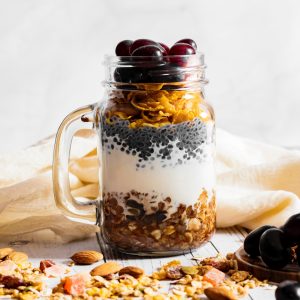We get a lot of questions from couples about the chance to have twins with fertility treatments. Much of what is out there is wrong so this article will explain how women get pregnant with twins. So today I will separate the fact from fiction.
Types of twins:
Most people are familiar with the fact that there are basically two types of twins.
The first type are identical twins identical twins arise from a split in the embryo shortly after fertilization.
Facts about identical twins:
Identical twins are uncommon only about 3 to 4 of every 1000 births are identical twins identical twins make up about one third of all twins with a few rare exceptions. This doesn’t seem to very much based on where you live or other factors.
Identical twins don’t generally run in families though there are some very rare families where it might happen. These rare families point to the possibility that there might be genes that increase the chance for identical twins.
Clomid chance for identical twins:
Though scientists have not yet been able to pin down any specific genes yet the fertility medication Clomid is well known to increase the chance for fraternal twins. But this 2006 study also found that the proportion of identical twins was higher when twins occurred with Clomid compared to a group of naturally occurring twins.
IVF chance for identical twins:
The only well-documented factor that increases the risk of identical twins is IVF. Growing embryos in the laboratory seems to increase the chance that an embryo will split. The longer they stay in the lab the greater the chance for embryo transfers that occur after growing embryos for two to three days.
Identical twins occur about 1 to 2 percent of the time waiting until the blastocyst stage at five to six days increases the chances to about two to three percent and making a hole in the shell surrounding the embryo known as assisted hatching, roughly doubles the chance that the embryo will split.
Facts about fraternal (non-identical twins):
Fraternal twins are a lot more interesting. Fraternal twins arise from fertilization of two different eggs by two different sperm.
There are several factors that seem to influence a woman having fraternal twins naturally. That is without the use of fertility drugs.
Women with a BMI over 30 had a 62 percent higher chance of twins and women with a BMI less than 20 had a 38 percent lower chance for twins.
Family history (genetics):
Fraternal twins do run in families for a given couple. If twins run in the female’s family or if the woman herself has a twin, the couple has a higher chance for twins themselves. If twins are in the male’s family, the couple doesn’t have a higher chance for twins.
But if the couple have daughters they will have a higher chance for twins.
The overall impact of family history may increase the chance for a twin by one and a half to two times. So about 15 to 20 twins per 1000 deliveries age.
Female age:
It is true that as women get older they have a higher chance of releasing more than one egg at the time of ovulation. And so they have a higher chance of a twin pregnancy.
The impact here is pretty strong. Women in their late 30s and early 40s have about four times the chance for twins compared to women in their late teens. The twin rate in older women is about 40 per 1000 births.
Food (diet) to have twins:
Some people have theorized that the reason why some regions in Africa like Nigeria have a higher twin rate is because of the presence of yams in their diet.
The evidence here however is extremely weak.
Dairy products: One small study suggested that the milk from cows that received a growth hormone would have higher levels of a hormone called IGF 1 and that women who drink the milk from these cows would therefore have higher IGF 1 levels themselves which would in turn stimulate the ovaries to produce multiple eggs.
However studies in women who drank a lot of milk found no increase in their IGF 1 levels. Dairy products are unlikely to influence the chance for twins.
Medications (Metformin, Folic acid):
Metformin is a medication that is used to induce ovulation in women with PCOS. Metformin does not increase the risk for twins.
Folic acid or folate is a supplement that all women should take if they are planning to become pregnant since it reduces the risk of certain birth defects.
The evidence is mixed here with some studies showing a slight increase in twins and other studies finding no increase. At this point the weight of evidence argues against any effect.
Letrozole (Femara): this medication is used to induce ovulation in women with PCOS. Studies have found a twin rate of 10 percent or higher or at least one hundred twins per 1000 pregnancies. Clomid or Clomiphene citrate has about the same rate of twins as Letrozole.
Injectable fertility medications like Follistim or Gonal F has a twin rate of 25 to 30 percent and a pretty substantial rate of triplets and quadruplets. Now with IVF the rate of fraternal twins depends primarily on the number of embryos transferred. If two embryos are transferred in a world class IVF program, the chance for twin pregnancy exceeds 60 percent.
Sub-Saharan Africa sees about 23 fraternal twins for every 1000 births.
Asian countries have about 5 per 1000 births.
The U.S. is in the middle with about 10 to 12 per 1000 births that occur naturally.
Body type and the chance for fraternal twins
Tall women appear to have one and a half to two times the chance for twins in some studies but not in others.










